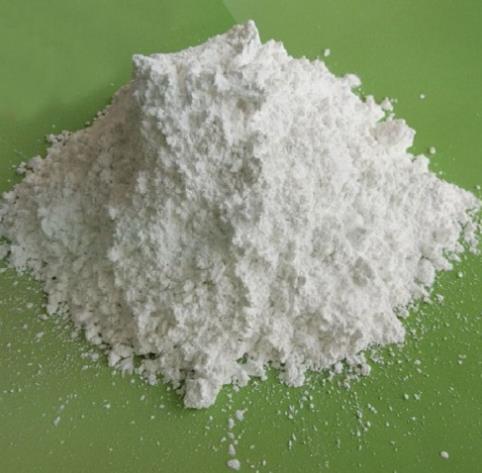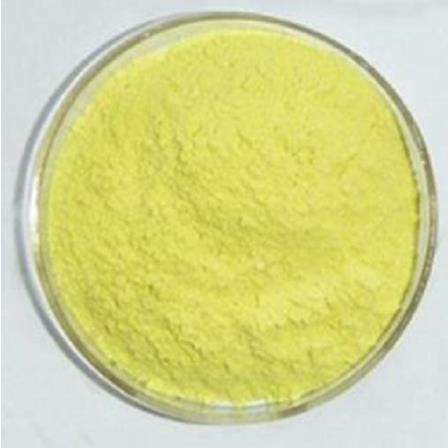Phosphatidylserine: A Vital Acidic Phospholipid for Brain Health and Neurotransmission
Oct 8,2024
General Description
Phosphatidylserine is a crucial acidic phospholipid found in human cellular membranes, particularly abundant in the brain and myelin. It plays a significant role in cognitive functions, with its docosahexaenoic acid-enriched form being vital for brain health. Synthesis primarily occurs in the central nervous system, where phosphatidylserine is synthesized from phosphatidylcholine and maintains membrane asymmetry essential for cell survival. It facilitates neurotransmission by enabling the release of neurotransmitters and enhancing cholinergic signaling through interactions with protein kinase C. Overall, phosphatidylserine is integral to maintaining both cellular function and cognitive health.

Figure 1. Phosphatidylserine
Overview
Phosphatidylserine is a significant acidic phospholipid that plays a crucial role in human cellular membranes, constituting 2% to 20% of the total phospholipid mass in adult plasma and intracellular membranes. In the human brain, Phosphatidylserine is especially abundant in myelin, and its content in gray matter increases significantly from birth to age 80. This phospholipid serves as a structural component of various organelles, including the endoplasmic reticulum, nuclear envelopes, and mitochondrial membranes. Notably, approximately 20% to 30% of Phosphatidylserine in gray matter exists in a specific form enriched with docosahexaenoic acid. The presence of docosahexaenoic acid in neuronal Phosphatidylserine is vital for cognitive functions, as a decrease in this fatty acid is linked to the progression of cognitive decline, including Alzheimer's disease. Therefore, the availability of Phosphatidylserine and docosahexaenoic acid is essential for maintaining brain health and function. 1
Biosynthesis and Membrane Dynamics
Biosynthesis in Cells
Phosphatidylserine synthesis primarily occurs within the central nervous system and involves the action of PS synthase 1. This enzyme catalyzes the substitution of serine for choline on phosphatidylcholine in the mitochondria-associated membrane domains of the endoplasmic reticulum. Newly synthesized phosphatidylserine is then transported to the inner leaflet of the plasma membrane. Interestingly, there exists a transmembrane asymmetry where all healthy human cells maintain PS-rich cytosolic leaflets and PS-poor extracellular leaflets. This asymmetry is crucial for cell survival, as it prevents unwanted phagocytosis. To maintain this balance, healthy cells allocate a significant portion of their adenosine triphosphate (ATP) consumption—up to 4%—to regulate transmembrane phosphatidylserine asymmetry, ensuring that misplacement does not signal for inappropriate engulfment by immune cells. 2
Transport and Conversion Processes
Most newly synthesized phosphatidylserine is actively transported from the endoplasmic reticulum to the outer leaflet of the mitochondrial inner membrane. This process relies on the transient tethering of PS-synthesizing domains of the endoplasmic reticulum to the mitochondrial outer membrane. A complex known as the ER-mitochondria encounter structure facilitates this interaction. The transport is energy-intensive and rapid, often depleting the outer mitochondrial membrane of phosphatidylserine, necessitating continuous replenishment from the endoplasmic reticulum. Once within the inner mitochondrial membrane, phosphatidylserine is quickly converted to phosphatidylethanolamine through the enzyme PS decarboxylase-1. Furthermore, as the levels of intracellular phosphatidylethanolamine stabilize, a portion of it is transported back to the endoplasmic reticulum to be reconverted into phosphatidylserine by PS synthase 2, particularly prevalent in brain and testes tissues. This dynamic cycle illustrates the vital role of phosphatidylserine in cellular membrane maintenance and function. 2
Role in Neurotransmission
Phosphatidylserine plays a crucial role in neurotransmission by integrating into neuronal cell membranes, significantly affecting the metabolism of key neurotransmitters such as acetylcholine, norepinephrine, serotonin, and dopamine. Adequate levels of phosphatidylserine, particularly those enriched with docosahexaenoic acid, are essential for the fusion of secretory granules with the presynaptic membrane, facilitating the release of neurotransmitter molecules into the synaptic cleft. This process is critical for the effective transmission of action potentials and proper postsynaptic interactions with neurotransmitter receptors. Furthermore, exogenous phosphatidylserine has been shown to enhance cholinergic neurotransmission, as evidenced by electroencephalographic recordings. The interaction between postsynaptic membrane-bound phosphatidylserine and calcium/calmodulin-dependent protein kinase C is vital for signal transduction, as the negatively charged head groups of phosphatidylserine attract calcium ions, promoting the activation of protein kinase C. This activation catalyzes downstream signaling events essential for translating presynaptic signals into postsynaptic responses. 2
References:
[1] {?}OPI{?}CRBM A, DIEUDONNéI2BC T, LENOIRI2BC G. Phosphatidylserine transport in cell life and death[J]. arXiv - QuanBio - Subcellular Processes, 2023, 52 7: 737-840. DOI:arxiv-2311.05223.
[2] MICHAEL J. GLADE PH.D. K S D C. Phosphatidylserine and the human brain[J]. Nutrition, 2015, 31 6: A1-A4. DOI:10.1016/j.nut.2014.10.014.
- Related articles
- Related Qustion
- Uses of Phosphatidylserine Dec 28, 2021
Phosphatidylserine (abbreviated Ptd-L-Ser or PS) is a phospholipid and is a component of the cell membrane.It plays a key role in cell cycle signaling, specifically in relation to apoptosis. It is a key pathway for viruses to enter cells vi
Hydrocortisone acetate, a synthetic derivative of the natural steroid hormone hydrocortisone, is widely used in the pharmaceutical and healthcare industries.....
Apr 10,2025Chemical ReagentsDoxycycline Hyclate is renowned for its broad-spectrum antibacterial activity, meaning it can target a wide range of bacterial infections.....
Dec 9,2024APIPhosphatidylserine
51446-62-9You may like
Phosphatidylserine manufacturers
- Soybean extract; Phosphatidylserine
-

- $0.00 / 1KG
- 2025-04-18
- CAS:51446-62-9
- Min. Order: 1KG
- Purity: 30%-99% HPLC
- Supply Ability: 1000KG
- Sunflower extract; Phosphatidylserine
-

- $0.00 / 1KG
- 2025-04-18
- CAS:51446-62-9
- Min. Order: 1KG
- Purity: 20%-60% HPLC
- Supply Ability: 1000KG
- Phosphatidylserine
-

- $10.00 / 1KG
- 2025-04-18
- CAS:51446-62-9
- Min. Order: 1KG
- Purity: 99%
- Supply Ability: 10 mt






